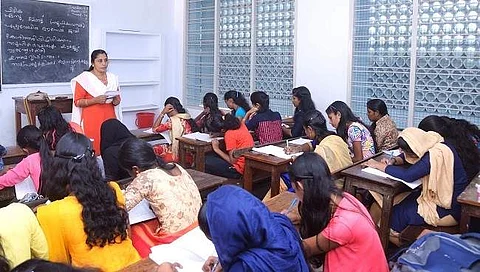

A tale of two trends has emerged in India’s education sector. On one hand, schools under the Prime Minister Schools for Rising India (PM-SHRI) scheme are thriving, while on the other, government schools across the country are grappling with declining enrollments.
According to data from the Ministry of Education, as reported by The Indian Express, 40 PM-SHRI schools in five states — Manipur, Tripura, Rajasthan, Meghalaya, and Madhya Pradesh — witnessed an enrollment surge of 75.8% between 2020-21 and 2023-24.
Student numbers rose from 14,258 to 25,065, with some schools recording increases as high as 295%. For instance, a school in Manipur saw enrollment jump from 173 students to 684.
Launched in 2022, the PM-SHRI scheme aims to transform 14,500 government schools into models of excellence, embodying the principles of the National Education Policy (NEP) 2020. These schools are intended to mentor others in their vicinity, with a focus on innovation and quality.
So far, 12,084 schools have been selected under the programme, although states like Kerala, Tamil Nadu, and West Bengal have yet to adopt the initiative. A ministry official explained to The Indian Express that this enrollment growth reflects improved parental confidence in government schools perceived to offer higher quality education.
In contrast, the Unified District Information System for Education Plus (UDISE+), as cited by News18, reveals a broader nationwide decline in government school enrollments. For the academic year 2023-24, enrollments fell by 37 lakh students compared to the previous year, marking a six-year low.
Notably, Bihar and Uttar Pradesh saw the sharpest declines, losing 28.92 lakh and 21.49 lakh students respectively. Officials attribute this trend to economic recovery post-pandemic, with working-class families migrating back to cities for employment.
Meanwhile, private schools experienced an upward trend, gaining over 60 lakh students in the same period. This increase may reflect broader economic recovery and changing parental preferences post-pandemic.
The UDISE+ report also underscores regional disparities in school infrastructure and enrollment. While some states face underutilised resources, others struggle with overcrowding.
These findings highlight the urgency of optimising educational infrastructure to meet the NEP 2020’s target of a 100% Gross Enrollment Ratio by 2030.
